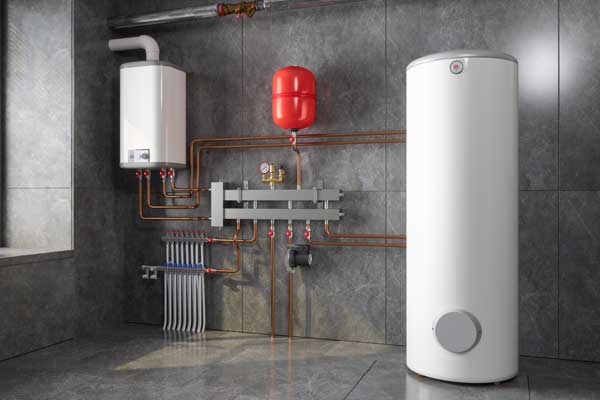Everybody maintains their unique way of thinking involving Tips on Maintaining a Water Heater.

Warm water is vital for everyday convenience, whether it's for a revitalizing shower or washing meals. To guarantee your warm water system runs efficiently and lasts longer, routine upkeep is key. This short article gives useful suggestions and understandings on exactly how to keep your home's hot water system to avoid disruptions and pricey repair services.
Introduction
Keeping your home's warm water system could seem complicated, but with a few basic steps, you can guarantee it operates efficiently for years to find. This overview covers everything from understanding your hot water system to DIY maintenance tips and understanding when to contact specialist aid.
Value of Keeping Your Hot Water System
Normal upkeep not just prolongs the life expectancy of your hot water system however also guarantees it runs efficiently. Neglecting upkeep can result in decreased performance, greater power expenses, and also premature failure of the system.
Indications Your Warm Water System Demands Upkeep
Recognizing when your hot water system requires interest can stop significant problems. Look out for signs such as irregular water temperature level, unusual noises from the heating system, or rusty water.
Purging the Water Heater
Flushing your hot water heater eliminates sediment build-up, boosting performance and lengthening its life.
Checking and Changing Anode Rods
Anode poles avoid corrosion inside the container. Checking and changing them when worn is essential.
Complex Concerns Needing Professional Aid
Examples include major leakages, electric troubles, or if your water heater is continually underperforming.
Routine Professional Maintenance Conveniences
Specialist maintenance can include comprehensive assessments, tune-ups, and ensuring conformity with safety criteria.
Checking and Adjusting Temperature Level Settings
Changing the temperature level settings makes certain optimum performance and safety and security.
DIY Tips for Upkeep
You can carry out numerous upkeep tasks yourself to keep your hot water system in leading problem.
Checking for Leakages
On a regular basis evaluate pipelines and connections for leaks, as these can bring about water damage and higher costs.
Understanding Your Warm Water System
Before diving right into upkeep tasks, it's helpful to understand the fundamental components of your hot water system. Typically, this consists of the hot water heater itself, pipes, anode poles, and temperature level controls.
Regular Monthly Upkeep Tasks
Routine monthly checks can assist catch minor concerns prior to they rise.
Evaluating Stress Alleviation Valves
Evaluating the pressure safety valve ensures it functions appropriately and prevents too much stress accumulation.
Shielding Pipes
Shielding warm water pipes decreases warm loss and can conserve power.
When to Call a Professional
While DIY upkeep is useful, some concerns call for professional competence.
Conclusion
Routine upkeep of your home's warm water system is essential for effectiveness, longevity, and price financial savings. By following these suggestions and knowing when to seek professional help, you can make sure a dependable supply of hot water without unexpected disruptions.
How to Maintain an Instant Hot Water Heater
Before tinkering with your hot water heater, make sure that it’s not powered on. You also have to turn off the main circuit breaker and shut off the main gas line to prevent accidents. Also turn off the water valves connected to your unit to prevent water from flowing into and out of the appliance. 2. When you’re done, you have to detach the purge valves’ caps. These look like the letter “T” and are situated on either side of the water valves. Doing so will release any pressure that has accumulated inside the valves while at the same time avoid hot water from shooting out and burning your skin. 3. When the purge valves’ caps are removed, you have to connect your hosing lines to the valves. Your unit should have come with three hoses but if it didn’t, you can purchase these things from any hardware or home repair shops. You can also get them from retail stores that sell water heating systems. Read the user’s manual and follow it to complete this task properly. When the hosing lines are connected, open the purge port’s valves. 4. You should never use harsh chemical cleaners or solutions when cleaning your unit. Make use of white vinegar instead. It should be undiluted and you’ll probably use about 2 gallons. 5. Now flush your water heater. This task should probably take about 40 minutes. We can’t give you specific directions for this because the procedure is carried out depending on the type, model and brand of your heater. With that being said, refer to the user’s manual. 6. When you’re done draining the unit, you have to turn off the purge port valves again. Remove the hosing lines that you earlier installed on each of the water valves. Put the valve caps (purge port) back in their respective places and be very careful so as not to damage the rubber discs that are found inside these caps. 7. Now that everything’s back in place, check your user’s manual again to find out how to reactivate your water heating system. 8. Once it is working, turn one of your hot water faucets on just to let air pass through the heater’s water supply pipes. Leave the tap on until water flows smoothly out of it. https://www.orrplumbing.com/blog/2014/september/how-to-maintain-an-instant-hot-water-heater/

I ran across that piece about How to Maintain a Hot Water Heater in a Few Simple Steps when doing a search on the web. Sharing is nice. You just don't know, you might be helping someone out. I appreciate your readership.
Request An Estimate